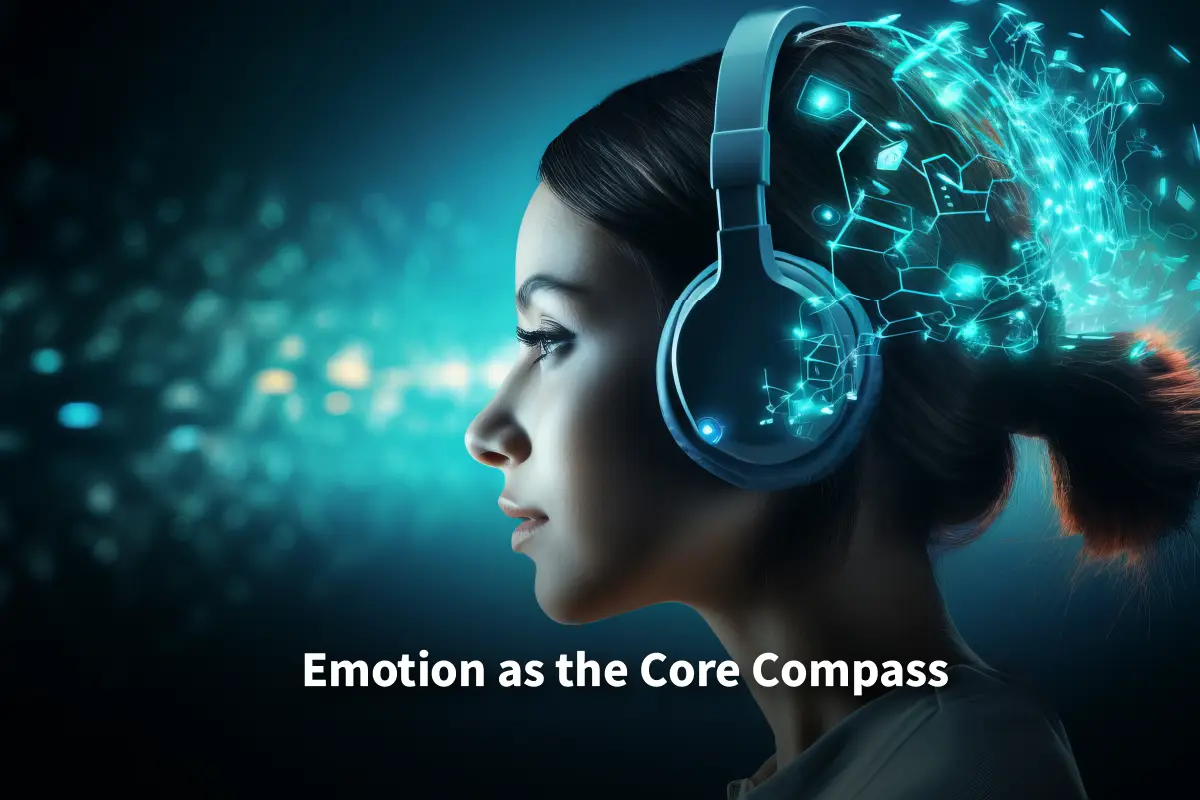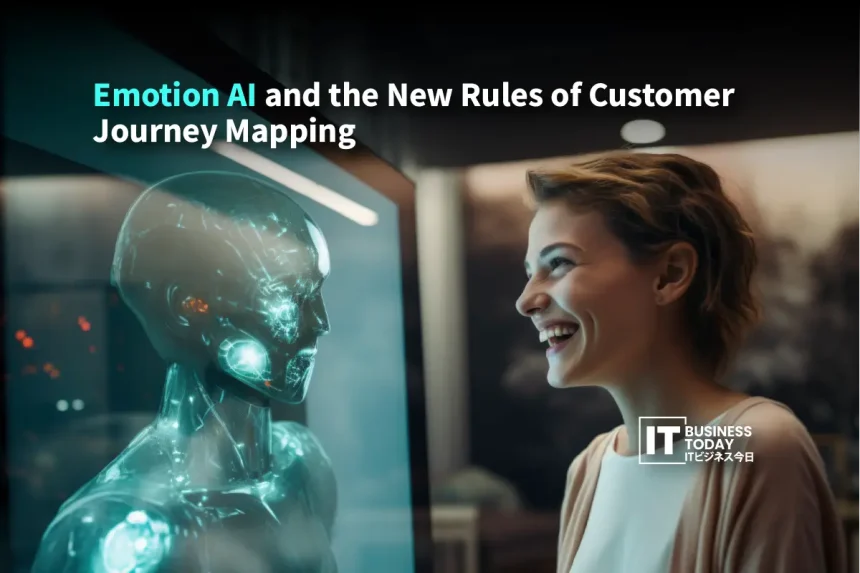For decades, Japanese businesses have set the global gold standard for customer service. Attention to detail and omotenashi (wholehearted hospitality) led to efficient, respectful, and satisfying experiences. Traditional customer journey mapping was our guide. It showed a linear chart with touchpoints from awareness to purchase and beyond. We found pain points, made transitions easier, and measured satisfaction with surveys and NPS scores. Beneath those high satisfaction ratings, a hidden world exists. It holds unspoken frustrations, brief moments of joy, and subtle anxieties. Surveys often miss these feelings. The customer journey, it turns out, wasn’t just a path; it was an emotional rollercoaster. Emotion AI isn’t just a new tool; it’s a game changer. It calls for a fresh look at how we map the customer journey.
Decoding the Language of Emotion
Emotion AI, or affective computing, moves far beyond asking customers how they feel. It understands the complex, often hidden language of human emotions. This includes voice tone, facial expressions, text mood, body signals like heart rate, and behavior patterns. Advanced algorithms analyze customer service call recordings. They look for keywords and also check vocal tones. This helps spot signs of stress or confusion. Video analytics in stores can quickly spot signs of hesitation or joy in customers. Chatbot conversations are parsed for underlying frustration masked by polite language. This technology doesn’t replace human intuition. Instead, it boosts it. It offers an objective view of the emotions present in every customer interaction.
Consider the experience of a major Japanese electronics retailer piloting Emotion AI. Traditional metrics showed their online configurator tool was ‘efficient,’ with high completion rates. Emotion AI analyzed user webcam footage and found micro-expressions of confusion and frustration. These reactions occurred at a specific, complex step. Exit surveys didn’t capture this. Users often gave polite, positive answers. Using emotional friction data led to a big rise in conversions, rather than just focusing on completion rates. They also noticed fewer support calls afterward. The silent struggle was finally heard.
Also Read: Top 7 Digital Health Startups Revolutionizing Patient Monitoring in Japan
The Flaws in Linear Thinking
Traditional journey mapping, while valuable, suffers from critical limitations in today’s dynamic environment. According to Forrester’s 2025 Global CX Index, customer experience quality declined for 21% of brands, with only 6% improving, while 73% remained unchanged, despite many claiming high customer satisfaction. It usually shows a flat, average view. This ‘perfect path’ often doesn’t match any customer’s real, messy experience. It emphasizes clear actions and stated satisfaction. But it misses the strong, hidden feelings that truly drive decisions, loyalty, and support. Most crucially, it’s inherently retrospective. We map what happened, not what is happening right now, or what might happen next. In Japan, people often hold back their true feelings. So, if we only use surveys, we might miss important issues. We might focus on being polite and overlook deeper issues. Disengagement and unmet emotional needs can go unnoticed.
This aligns with Forrester’s earlier U.S. data showing 19% of brands significantly declined in CX quality in 2022, the steepest one-year drop since the CX Index began.
Emotion AI is the Cartographer of the Unseen
Integrating Emotion AI changes journey mapping. It turns a simple diagram into an emotional ecosystem that is alive and dynamic. Here’s how the rules are changing:
- Mapping the Emotional Terrain in Real-Time: Forget post-interaction surveys. Emotion AI provides continuous emotional feedback during the journey. Companies report faster issue resolution in 84% of cases, and 61% see improved real‑time personalization when using emotional signals and Gen AI together. Imagine knowing right away when confusion happens in online banking. Or sensing the joy when a customer discovers the perfect product recommendation. This enables quick action. If we spot frustration online, we can offer a chat right away. If a customer seems hesitant, a store associate can be sent to guide. The journey map becomes dynamic, pulsing with real emotional data.
- Understanding the ‘Why’ Behind the ‘What’: We see a customer abandons a cart. Traditional mapping might flag the checkout page. Emotion AI might show a spike in anxiety over unexpected shipping fees. It could also indicate confusion about warranty options that were mentioned earlier. It links actions to emotions. This shows the real reasons behind behaviors like churn or advocacy. A deep understanding is crucial for Japanese businesses aiming to offer true omotenashi.
- Predictive Empathy: Anticipating Needs Before They’re Spoken: Emotion AI analyzes emotional patterns in large datasets. This lets it predict feelings, not just describe them. It can spot customers showing signs of distress that usually come before churn. This helps in taking proactive steps to keep them. It can predict which customers are most open to premium upgrades or new services. This is based on their emotional engagement patterns. A top Japanese car brand uses in-cabin Emotion AI during test drives, but only with opt-in consent. Watching how drivers and passengers react to features or conditions reveals true emotions. This helps design and marketing efforts more accurately than post-drive surveys.
While specific Japanese test‑drive programs aren’t public, predictive emotional analytics are well‑documented. McKinsey shows that companies excelling at personalization via predictive analytics generate significantly higher margins, up to 40% more revenue than average players. - Hyper-Personalization Powered by Feeling: Personalization based on past purchases is table stakes. The next frontier is personalizing experiences. This will rely on our current emotions and future emotional needs. A travel booking platform with Emotion AI can sense stress in a user’s behavior. It can then show calming, all-inclusive resort options first. These resorts will have clear cancellation policies. This approach is better than complicated, multi-stop itineraries. A financial services app can help users worried about market ups and downs. It might show helpful educational content or provide reassurance from a trusted advisor. This level of contextual empathy builds profound trust and loyalty.
Deloitte Digital found emotionally relevant experiences can increase purchase likelihood by nearly 70%. In another study, one in five consumers would pay 20% more for experiences they see as personalized, and 22% willingly share data for such personalization.
Elevating Omotenashi with AI

For Japanese business leaders, Emotion AI is more than a tech upgrade. It supports and enhances cultural values. Japan’s service ethos demands deep respect and anticipating unspoken needs. Emotion AI provides the tools to do this at scale and with unprecedented precision. In a competitive market, customer expectations keep rising. Demographic changes also call for efficient, yet personal service. Emotion AI provides a strong advantage. You can boost customer loyalty in a culture that values lasting relationships. As Japanese companies expand globally, Emotion AI can help them grasp cultural emotional differences. This ensures that their famous service quality remains effective.
Implementation and Ethics
Adopting Emotion AI-driven journey mapping requires careful navigation. Success relies on combining various data types: voice, video, text, and behavior. This creates a unified emotional intelligence layer. It enhances current CRM and analytics platforms. Crucially, this must be done with the utmost respect for privacy and transparency. Japanese consumers, while valuing personalized service, are highly sensitive to data privacy. You need clear opt-in methods. Also, communicate clearly about how data is used. This needs to follow Japan’s strict Act on the Protection of Personal Information (APPI). Strong security measures are essential too. Businesses need to build trust. They should show that Emotion AI is used ethically. This helps improve the customer experience, not manipulate it. Training teams to grasp and use emotional insights is crucial. The technology helps people; it doesn’t take away the vital human touch.
Challenges include making sure algorithms are accurate for different groups. We also need to reduce cultural biases in the training data. Continuous refinement and human oversight are essential. To handle resistance to change in organizations, address fears of ‘creepiness.’ Clear communication about benefits and ethical protections is crucial.
Emotion as the Core Compass

The trajectory is clear. Emotion AI will get smarter. It will combine voice, facial expressions, text, and body signals through multimodal analysis. This will lead to a deeper understanding. Integrating with other AI systems will create responsive environments. These will adapt in real-time to a customer’s emotions. Japanese businesses have a chance to lead this change. They can weave emotional intelligence into the core of the customer experience.
Charting the Course with Emotional Intelligence
Mapping customer journeys just through actions and surveys is outdated. Emotion AI uncovers the emotional landscape that influences how customers view your brand. It uncovers hidden friction points, unspoken joys, and signs of loyalty and value. This technology gives Japanese business leaders a chance to enhance their service. It helps them understand their customers better. They can fulfill the spirit of omotenashi by anticipating unexpressed needs. This way, they can build strong relationships based on trust and connection. The customer journey isn’t just something we watch anymore. It’s a lively emotional experience. Now, we can understand it better, respond quickly, and even shape it as it happens. Ignoring this silent revolution isn’t an option. Embracing Emotion AI is crucial for anyone looking to shape the future of customer experience. This applies in Japan and beyond. The map has been redrawn; it’s time to navigate by the power of emotion.







